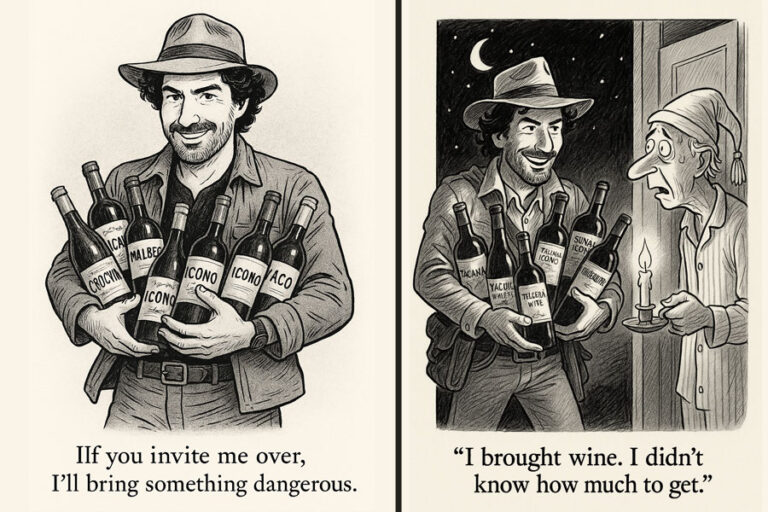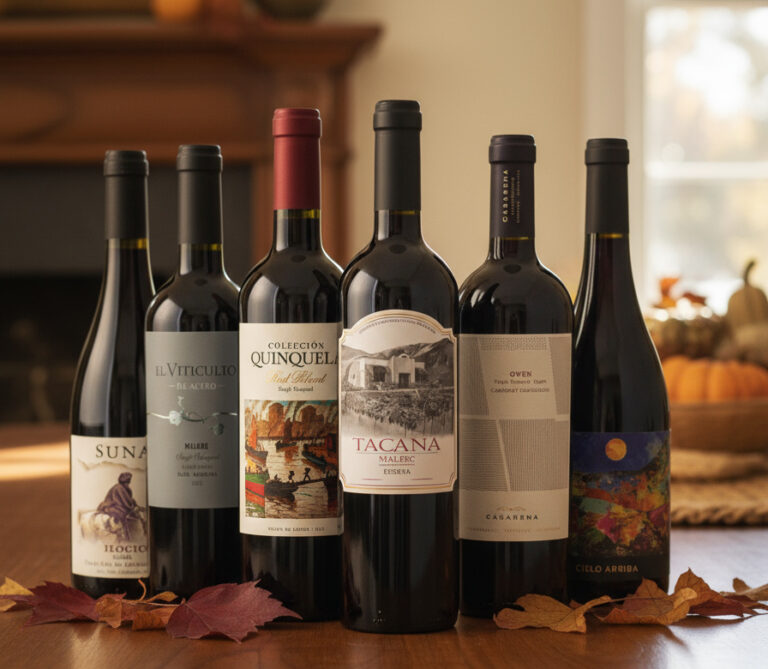[et_pb_section fb_built=”1″ _builder_version=”4.16″ _module_preset=”default” global_colors_info=”{}”][et_pb_row _builder_version=”4.16″ _module_preset=”default” global_colors_info=”{}”][et_pb_column type=”4_4″ _builder_version=”4.16″ _module_preset=”default” global_colors_info=”{}”][et_pb_text _builder_version=”4.27.0″ _module_preset=”default” hover_enabled=”0″ global_colors_info=”{}” sticky_enabled=”0″]
Dear Fellow Wine Enthusiasts,
With Halloween just around the corner, candy seems to be the talk of the town. I can remember Halloween being that time of year when candy rules didn’t apply — there were no limits. It was all about how much we could gather (and eat), comparing our bulging bags with friends and doing our own high-stakes trades.
These days, I find myself leaning more towards sip and savor. Wine has become my adult candy — a tasty treasure that needs to be enjoyed in the right amounts to truly appreciate it. But there’s a very strict rule when it comes to candy and wine.
So if you’re like me and will be waiting for the kids to show up with a glass in hand, don’t mix them! Leave the candy to the kids. Don’t get tempted — I know it might be hard. But don’t take the candy from the kids!
There’s an interesting reason why that fun-size Reese’s doesn’t pair well with your cabernet. You might have noticed that when you enjoy a piece of candy and then take a sip of wine, that well-balanced merlot tastes as off as orange juice after brushing your teeth. What happened?
It all comes down to how sugar affects our taste buds. The sweetness coats your tongue, muting the receptors that detect subtler flavors. Even the smoothest wine can turn unexpectedly sour or bitter. It’s like trying to appreciate a beautiful sunset through a foggy window — you miss the intricate details that make it special.
Moreover, the acidity in the wine can amplify the sweetness of the candy, leading to a peculiar flavor clash that overshadows the wine’s delicate notes. It’s a scenario where neither the candy nor the wine shines.
While we’re on the topic, let’s clear up a common misconception: the difference between dry wines and tannic wines. It’s easy to confuse the two, but they’re distinct.
A dry wine simply means that most of the sugar has been converted to alcohol during fermentation. The wines you receive from our club are typically dry, allowing the true character of the grape to come forward.
Tannins, on the other hand, are natural compounds found in grape skins, seeds, and stems. They’re responsible for that drying, puckering sensation you might experience — similar to the feeling when sipping a strong cup of tea.
Here’s a little experiment that can help you next time you try a wine: try tasting the wine while gently pinching your nose. It might seem unconventional, but it helps distinguish between actual sweetness (from residual sugar) and perceived sweetness from fruity aromas. You may be surprised by the nuances you discover.
Now, you might be thinking, “What about chocolate and wine? Isn’t that a classic pairing?” And you’d be absolutely right.
Chocolate — especially dark chocolate — isn’t your everyday candy. It’s complex, slightly bitter, and rich, which can beautifully complement certain wines. The key lies in the cocoa content and selecting the right bottle to accompany it.
When pairing wine with dark chocolate, it’s generally preferable to choose a wine that is either sweet with low tannins or has soft tannins with a fruity profile.
This approach helps balance the bitterness and astringency of the cocoa, enhancing your overall tasting experience. So, a sweet, less tannic wine or a dry wine with soft tannins would be more suitable than a dry, highly tannic wine.
Try a 70% cacao dark chocolate paired with a luscious malbec. The way the rich chocolate and the robust wine dance together on the palate is nothing short of extraordinary.
So, as the little ghosts and goblins make their rounds in search of sweet treasures, why not treat yourself to something more refined?
Dessert is always served at the end for a reason! So, if you decide to have candy, perhaps enjoy it after you’ve savored your wine. Or better yet, consider ghosting the candy and letting the wine be your treat.
I’m genuinely interested — do you ever pair wine with sweets? Do you have a favorite pairing that elevates the experience, like a smooth pinot noir with a piece of dark chocolate? I’d love to hear your thoughts.
Please feel free to share your own wine stories and discoveries. Let’s keep the conversation flowing, much like a good vintage.
Warm regards,
Diego
[/et_pb_text][/et_pb_column][/et_pb_row][/et_pb_section]



